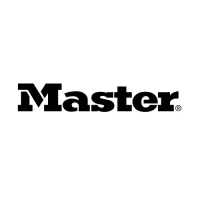en
it
de
es
fr
nl
pt
da
no
sv
pl
ru
cs
hu
sl
tr
hr
lt
lv
et
ro
sk
bg
uk
bs
el
zh
IMPORTANT: READ AND UNDERSTAND THIS MANUAL PRIOR TO
ASSEMBLING, STARTING UP OR CONDUCTING MAINTENANCE ON THIS
HEATER. USING THE HEATER INCORRECTLY CAN CAUSE SERIOUS
INJURY. KEEP THIS MANUAL FOR FURTHER REFERENCE.
1. DESCRIPTION
This series of heaters is particularly suited to
heating medium to large-sized rooms or areas.
The series is divided into direct heaters and
indirect heaters.
Direct heaters (PIC. 1-2) mix hot air with
combustion fumes. For this reason they are
particularly suited for outdoor environments or
areas with high air renewal where there is a
need to heat up, defrost or dry.
Thanks to a heat exchanger, indirect heaters
(PIC. 3-4) separate combustion gases from the
hot air released into the environment. This way
it is possible to introduce a ow of clean hot
air in the area that needs to be heated up and
direct exhaust fumes outside.
These heaters have been designed in line with
the most recent safety, operating and duration
criteria. The safety devices ensure the machine
always operates correctly.
2. SAFETY INFORMATION
WARNINGS
!
IMPORTANT: This appliance is not
suitable for use by persons (including
children) with reduced physical, sensory
and mental capacities or with lack of ex-
perience or knowledge unless supervised
by a person responsible for their safety.
Children must be supervised to make sure
they do not play with the appliance.
!
DANGER: Suffocation by carbon
monoxide can be fatal.
The rst symptoms of suffocation by carbon
monoxide are similar to those of u with
headache, light-headedness and/or nausea.
These symptoms could be caused by the
faulty functioning of the heater. IF THESE
SYMPTOMS OCCUR, GO OUTDOORS
IMMEDIATELY and have the heater repaired
by a technical service centre.
►►2.1. REFUELLING:
►2.1.1. Personnel appointed to carry out
refuelling must be qualied and fully fa-
miliar with this manual and current regu-
lations on how to refuel heaters safely.
►2.1.2. Only use the type of fuel specied
on the heater’s identication plate.
►2.1.3. Before refuelling, turn off the heater
and wait for it to cool down.
►2.1.4. The fuel storage deposit tanks must
be located in a separate facility or build-
ing.
►2.1.5. All fuel tanks must be kept at a mini-
mum distance from the heater, in accor-
dance with current safety regulations.
►2.1.6. Fuel must be stored in areas where
the oor surface does not allow under-
neath dripping, or any other leakage
which may ignite the fuel.
►2.1.7. Fuel must be stored in accordance
with current safety regulations.
►►2.2. SAFETY:
►2.2.1. Never use the heater in areas with
petrol, paint solvents or other highly am-
mable vapours.
►2.2.2. Comply with all local legislation
and current regulations when using the
heater.
►2.2.3. Heaters used near tarpaulins, cur-
tains or other similar covering materials
must be kept at a safe distance. It is ad-
vised to use re-proof covering material.
►2.2.4. Only use heaters in well-ventilated
areas. Set-up a suitable open and venti-
lated area, with the purpose of introduc-
ing fresh air from outdoors, in compli-
ance with the current safety standards.
►2.2.5. Heaters must be powered only with
the correct voltage and frequency values
as specied on the heater’s identication
plate.
►2.2.6. Only use suitable earthed exten-
sion cable.
►2.2.7. The recommended safety distanc-
es between heaters and ammable sub-
stances are: front output = 2,5 m; side/
top/rear output = 1,5 m.
►2.2.8. Avoid re hazards by placing the
hot or functioning heater on a at level
surface.
►2.2.9. Always keep animals at a safe dis-
tance.
►2.2.10. Disconnect the heater from the
main power supply when not in use.

